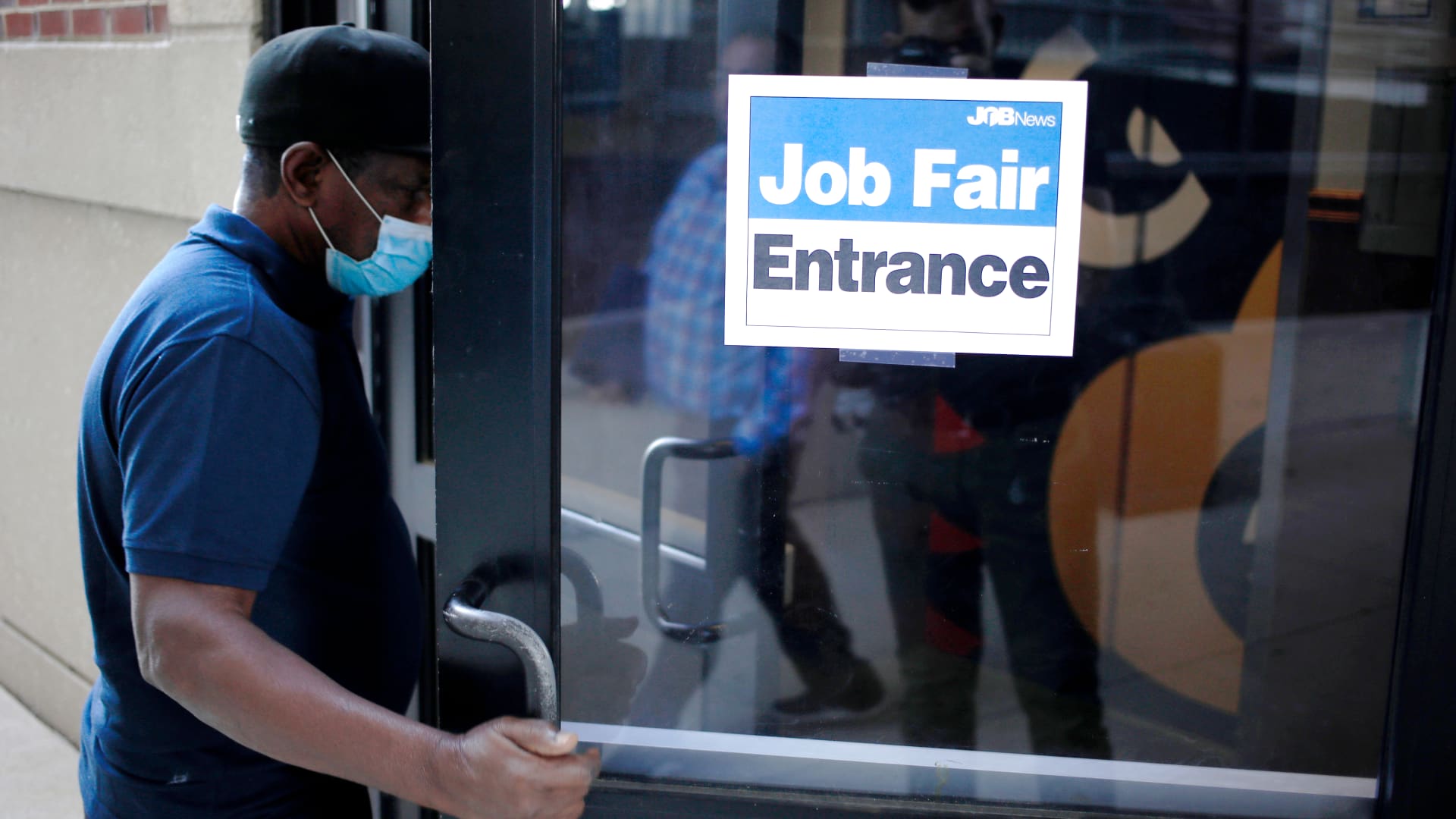Demand for workers fell to its lowest level in more than 2½ years in November while hirings and layoffs both moved lower, the Labor Department reported Wednesday.
The department’s Job Openings and Labor Turnover Survey showed employment listings nudged lower to 8.79 million, about in line with the Dow Jones estimate for 8.8 million and the lowest since March 2021. Openings fell by 62,000, though the rate of vacancies as a measure of employment was unchanged at 5.3%.
In addition to the modest move lower in openings, hiring fell by 363,000, moving the rate down to 3.5%, a 0.2 percentage point decline. Layoffs dropped by 116,000, with the rate holding steady at 1%. A report last month from the Labor Department showed a net increase in nonfarm payrolls of 199,000 in November. A report Friday is expected to show growth of 170,000.
The ratio of job openings to available workers fell to 1.4 to 1, still elevated but down sharply from the 2 to 1 level that had been prevalent in 2022. Companies had faced a severe supply-demand mismatch in the period after the Covid pandemic began, a situation that has made gradual progress back to a more normalized state.
Job openings fell by 128,000 for transportation, warehousing and utilities and were off 97,000 in leisure and hospitality. Wholesale trade saw an increase of 63,000 and financial activities grew by 38,000.
Federal Reserve officials watch the JOLTS report for evidence of labor slack. The historically tight labor market had helped push inflation higher, hitting a more than 40-year peak in mid-2022 that also has slowly begun to recede. Policymakers in December indicated they are likely to begin a gradual reduction in interest rates this year if inflation continues to come down.
“Today’s JOLTS data is another signal that the Fed is delivering a soft landing,” said Ron Temple, chief market strategist at Lazard. “Today’s report is good news for American workers and the economy, but it also suggests to me that the Fed is unlikely to cut rates as aggressively in 2024, as markets currently indicate, given the risk of reigniting inflationary pressures.”
A separate report Wednesday showed that the U.S. manufacturing sector is still in contraction.
The ISM manufacturing report for December registered a reading of 47.4, representing the percentage of workers reporting expansion. Anything below 50 indicates contraction. The index was up 0.7 point from November and was slightly better than the 47.2 estimate from Dow Jones.
Employment, however, was a relative bright spot in the report, rising to 48.1, a 2.3-point monthly increase. Order backlogs jumped 6 points to 45 and new export orders rose to 49.9, a 3.9-point acceleration. There also was some positive inflation news as the prices sub-index decreased to 45.2, down 4.7 points.
Don’t miss these stories from CNBC PRO:
- These stocks will be the biggest S&P 500 winners of 2024, according to analysts
- Here’s where to invest $50,000 in the new year, according to the pros
- Could a bitcoin ETF approval be a sell-the-news event? Here’s what to expect if it happens
- These stocks will be the biggest Dow winners of 2024, according to analysts
- Oprah’s flip on weight loss drugs is a sign of what’s to come for the ‘Ozempic trade’ in 2024
